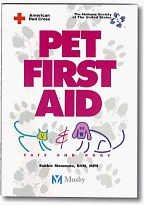Take the class
Order Pe t First Aid online.
Get Quick Tips
Learn CPR
Generic Or Branded Drugs for Treating ED
First aid rules are perhaps the most important thing that every person who has reached a conscious age needs to know. Even teenagers and school-age children can learn the most basic advice on how to act when another person's life is in danger. However, the rules for providing first aid to your most faithful comrades - pets - should not be forgotten either. It is important to remember that first aid is by no means a substitute for going to the veterinarian!

Poisoning is the most common pet emergency distinguished by the fact that you need to act very quickly. All products and substances that are harmful to humans are also harmful to pets: insect repellents, household chemicals, glass cleaner and others. In addition, human medicines can be deadly. If a toxic substance comes into contact with the skin (fur) of a pet or gets in his eyes, act in accordance with the instructions on the product label, intended for people who have been exposed to it. Usually, you should wash the affected area with soap and water. If your pet has eaten something dangerous, immediately give him plenty of fluids and contact any emergency veterinary clinic. Save a sample of the substance your pet has ingested so the veterinarian can quickly determine the right treatment.
If your pet has seizures and you don't know the cause, note the duration and frequency of the seizures. Don't let your pet injure himself on surrounding objects, such as furniture.
In the event that your pet has sustained an injury in which you suspect a fracture, try to move the injured limb as little as possible. Gently immobilize the animal if it has a chest or back injury - for example, cover it with a blanket.
For an open, punctured, or cut wound, try to stop the bleeding by firmly pressing a clean cloth, bandage, or cotton wool to it. If the bleeding is heavy, pulsating, apply a tight tourniquet above the lesion and take the animal to the veterinarian within a maximum of 20 minutes. Loosen the tourniquet from time to time, otherwise a danger of losing a limb will develop.
If you experience symptoms of internal bleeding such as blood from the nose or mouth, blood from the anus, coughing up blood, levels in the urine, loss of consciousness, or a severely slow pulse, contact your veterinarian immediately. Keep the animal warm and at rest.
For burns, it is important to cool the affected area as quickly as possible with plenty of cold water. You can use ice wrapped in cloth.
If your pet has symptoms of choking (difficulty breathing, coughing, foaming at the mouth, blue tongue), do not try to remove the stuck object yourself unless it is sticking out a lot. There is a risk of damage to the pet's larynx and esophagus. It is better to sharply squeeze your pet's chest cage with your hands several times from the sides, stimulating the foreign body to come out.
To avoid sunstroke, never leave your pet alone in a closed car. If your pet is overheated, put a cold compress on his neck and head, pour cold water on his stomach and between his hind legs, then contact your veterinarian.
The main thing is to stay calm and to keep in mind that whatever the accident that happened to your pet, the most important thing is to resort to first aid measures as soon as possible so that they don't become the last.